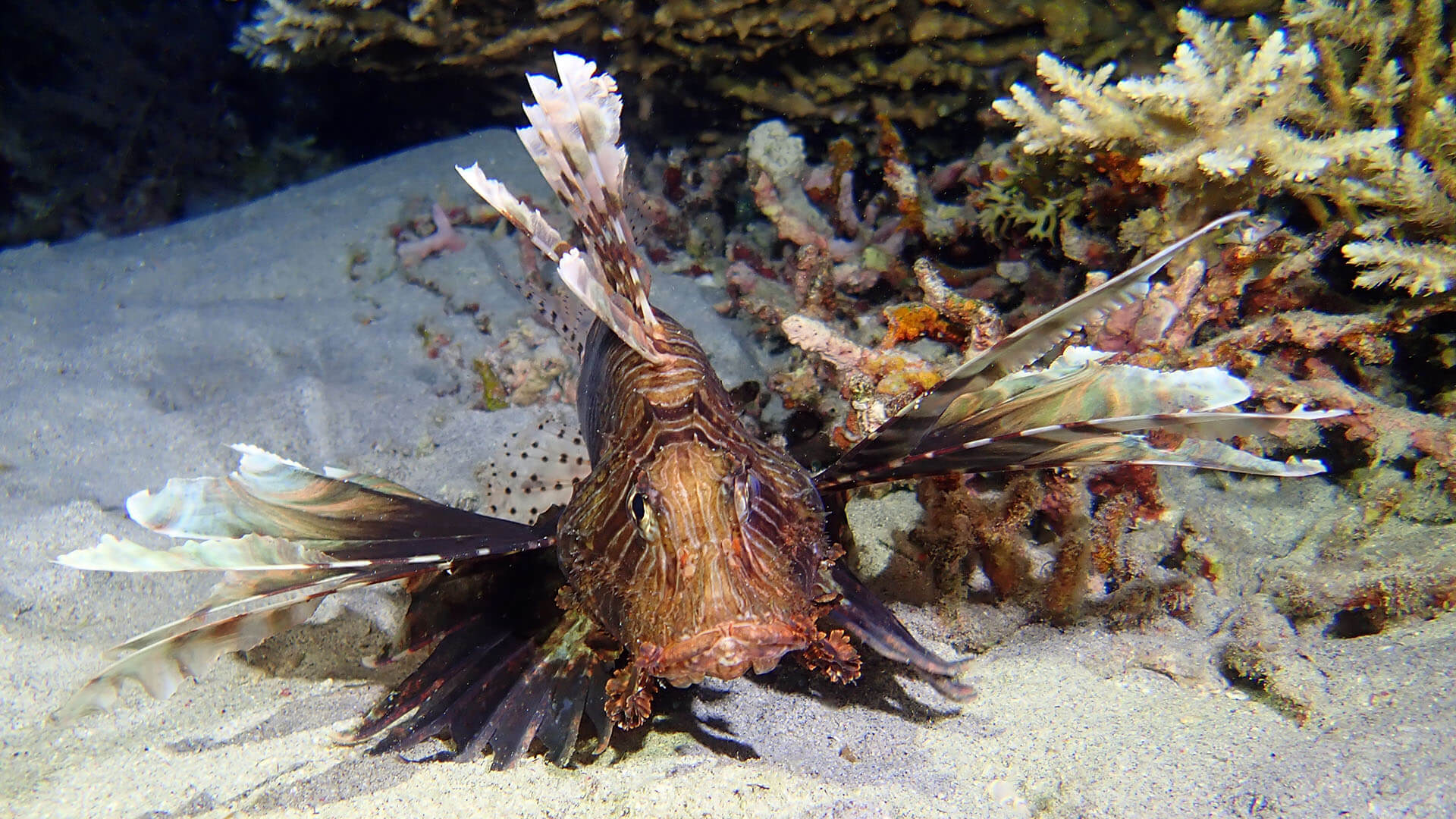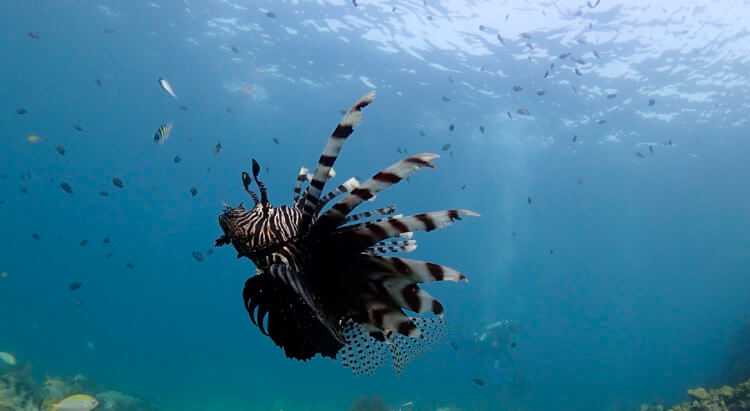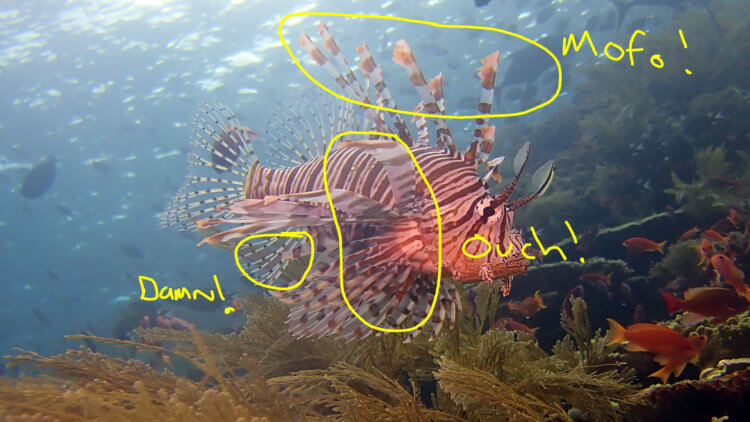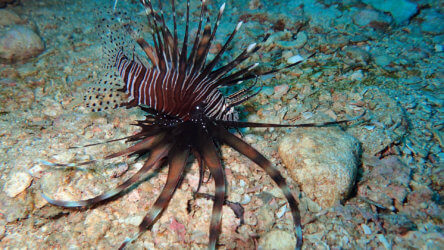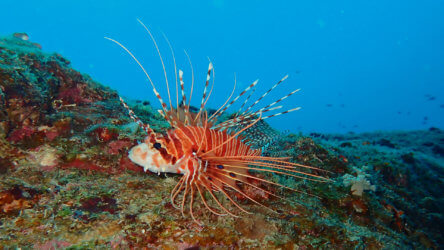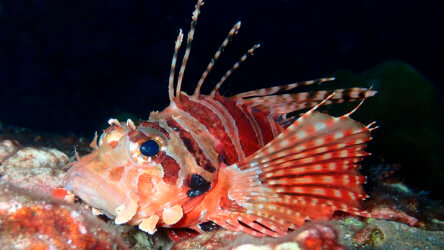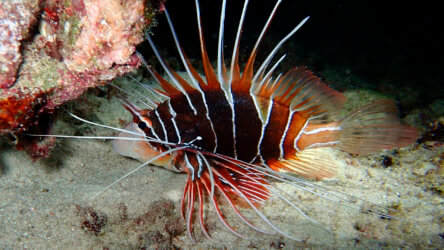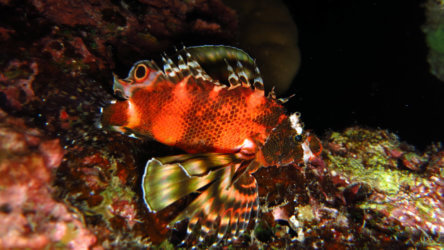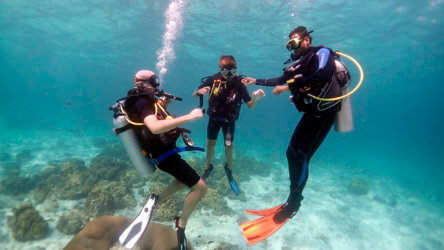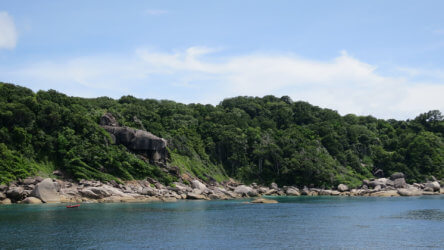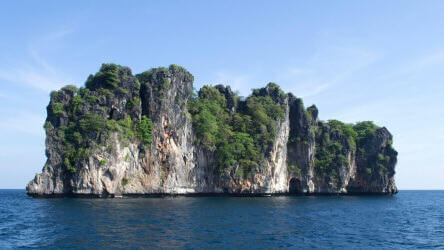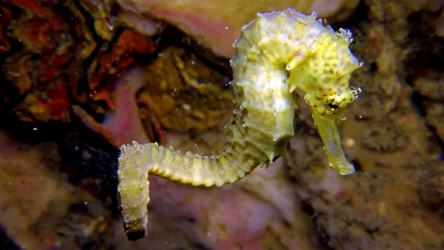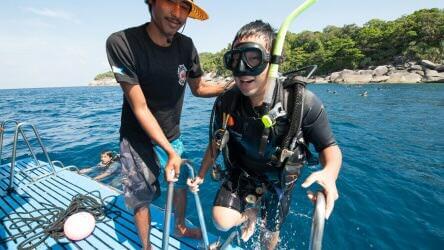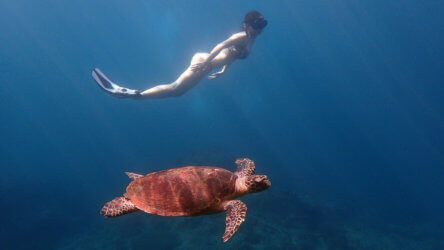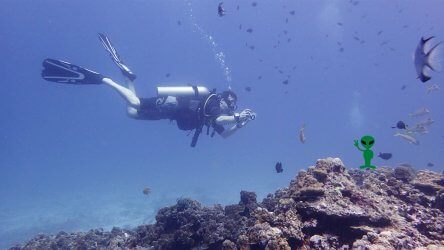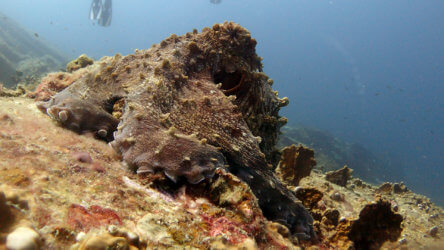Lionfish Are Smarter Than The Average Fish And A Conqueror Of Seas
We call them lionfish on this side of the world but they’re also none as firefish, zebrafish, butterfly cod and turkeyfish (????) in other areas. We tend to lump them together but there are quite a few different species that we find around Phuket. All have stunning warning colours, are very photogenic, show little or no fear of divers and have toxic fins that can pack quite a punch. Fortunately lionfish are easy to spot and stings are very rare.
A Fish That Uses Team Work And Signals
Most species have the long toxin filled fins that they use to corral their prey up against the reef and have been observed coordinating with each other with requires high cognition. Even different species of lionfish have been observed hunting together which begins with a fin display to signal the imminent slaughter of some nearby fish or shrimp. Fish are generally and quite rightly so filed in the stupid column but the hunting strategies of lionfish may just earn them a promotion to the ‘a bit dim’ section.
So How Toxic Are They?
Reports vary but it’s clearly something you definitely want to avoid. I know dive professionals who’ve ‘survived’ the ordeal and it appears the whinging lasts a lot longer than the pain. The pain is supposed to be quite intense in the first hour after the sting and gradually subsides over a few hours although some have reported feeling the affects for days afterwards. A healthy adult is very unlikely to experience extreme symptoms or death from envenomation but we’re all different and the toxin can cause more severe reactions in some individuals, including blistering, nausea and even necrosis.
Needless to say you should get checked out by a doctor as soon as possible and apply very hot (but not scalding) water to the affected area. It’s not quite clear whether the hot water breaks down the protein in the venom or by simply adding a new pain source your nerves get confused. Anyway it works
The Parts To Avoid
You shouldn’t be touching any part of the lionfish but the areas to definitely avoid are the spines along the back, sides and bum. The venom is stored in multiple sacks along the spine and delivered through a groove that runs the entire length. Lionfish won’t go out of their way to sting you so it’s only your own stupidity that will bring the pain. The photo below illustrates the danger zones:
Lionfish aren’t native to the America’s but they’re certainly making them selves at home nowadays. As an invasive species they’ve absolutely decimated the reef fish populations around and in the Caribbean. With no natural predators a super hybrid between Pterois volitans (red lionfish) and Pterois miles (common lionfish) has spread and multiplied in vast numbers, an ongoing eradication campaign has been necessary to stop the wiley fish from eating everything in it’s path. How they got there is not quite clear, hurricane Andrew gets blamed for a lot of things but is not the guilty party as some believe, lionfish sightings where reported 7 years before.
So it looks like an aquarist released the fish into the ocean, maybe an act of mercy has resulted in a catastrophic impact along the coast of the America’s. Hunts and competitions (all with first aid kits and hot water readily available) are carried out on an almost daily basis and even national supermarket chains have started stocking the apparently delicious fillets. This has drastically reduced the population but only a Trump inspired underwater wall will stop this invasion from the south.
Predators
So who eats this toxin tipped swimming set of bagpipes. Clearly animals that are very very hungry or enjoy pain. The list of marine sadomasochists is as follows: large moray eels, groupers, sharks, triggerfish, frogfish, flutemouths, scorpionfish and probably a lot more.
Splitting Hairs
It’s not just a lionfish, each one has it’s own name but can admittedly be difficult to tell apart, especially with their penchant for inter-species sex that produces hybrids but we’ll have a go. Below are photos and names of the species found around Phuket:
Common Lionfish (Pterois volitans)
Phuket: Yes
Widespread and the most likely that you will see. Various reef habitats from estuaries to outer reefs. Variable in colour, sometimes almost black in estuaries. Often with large tentacles above eyes.
Spotfin Lionfish (Pterois antennata)
Phuket: Yes
Size: Up to 20cm
All dive sites around Phuket. Adults with bluish black blotches near the base of the pectoral fins that are obvious when viewed from above. Coral reef habitats, shallow to about 30 m depth. Usually seen in crevices during the day and typically with head towards the safety of their hide-out or narrow passage.
Zebra Lionfish (Dendrochirus zebra)
Phuket: Yes
Size: 20cm
All around Phuket. Very similar to the twinspot lionfish but has solid fins with no elongated rays. Coastal to outer reef habitats in sheltered lagoons and in caves. Usually shallow, but reported to 80 m depth.
White-lined Lionfish (Pterois radiata)
Phuket: Rare
Size: 20cm
Common in the Similan Islands. Prefers rocky reefs and seems to avoid stony corals. Coastal, sometimes in surge-zones where in narrow crevices, or along rock-walls in small caves.
Two-eyed Lionfish (Dendrochirus biocellatus)
Phuket: Rare
Size: 13cm
Similan Islands but hard to find. More secretive than other lionfish around Phuket, and usually only seen at night when they are active. During the day in caves and sponges, and usually well out of sight. A distinctive species easily recognised by the eye-like spots in the soft dorsal fin, but also as feeler-like tentacles in front of the mouth.
Ask Our Guides
No doubt we’ll be able to show you more than one different species of lionfish during your dives, if you want to know which one just ask our guides or maybe point them to this page…All of our dive sites have lionfish but the King Cruiser Wreck attracts them in large numbers. Contact us at info@localdivethailand.com to come face to face with the beautiful but venomous Genghis Khan of the fish world!
Posted in Rare & Peculiar Critters on .
